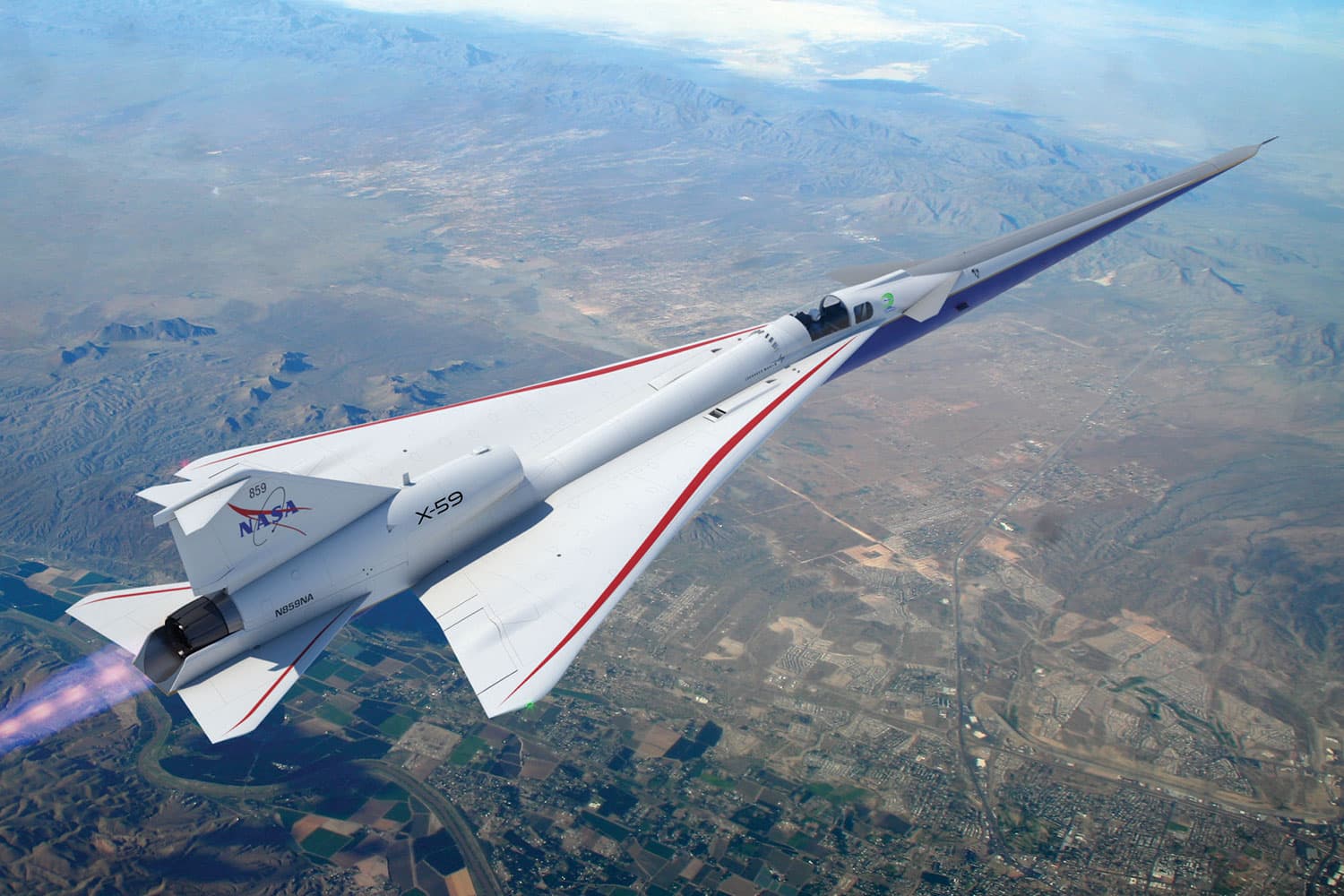
Seventy-five years ago, a sonic boom thundered for the first time over the high desert of California. A small group of researchers from the National Advisory Committee for Aeronautics (NACA) was the first to hear the thunder crack coming from the Bell X-1 rocket plane flying faster than the speed of sound.
Now, aeronautical innovators with NASA’s Quesst mission are poised to break the sound barrier again. But this time, in a very different way that could make it possible for all of us to one day travel by air just as fast as any of the X-1 pilots who flew supersonically.
“That first supersonic flight was such a tremendous achievement, and now you look at how far we’ve come since then. What we’re doing now is the culmination of so much of their work,” said Catherine Bahm, an aeronautical engineer at NASA‘s Armstrong Flight Research Center in California.
Bahm and her team are responsible for designing and building the X-59, NASA’s experimental airplane that is the centerpiece of Quesst. Through Quesst, NASA plans to demonstrate the X-59 can fly faster than sound without generating the typically loud sonic booms that led to supersonic flight over land being banned in 1973.
NASA’s plan includes flying the X-59 over several communities to survey how people react to the quieter sonic thump it produces – if they hear anything at all. Their responses will be shared with regulators, who will then consider writing new rules to lift the ban.
When that happens, it will mark another historic milestone in flight, potentially opening a new era in air travel, where airline passengers might hop on a supersonic jet at breakfast time in Los Angeles to make a lunchtime reservation in New York City.
With the X-59 and its quiet supersonic technology, NASA hopes to enable the industry to make faster-than-sound flight available to everyone. The first flight of the X-59 is targeted for early 2023.
NASA prepares to break the sound barrier with X-59
Source: Tambay News

0 Comments